
Ultra-Relativistic Heavy Ion Collisions
Contemporary nuclear physics is highly interested in properties of strongly interacting matter under extreme conditions that occurred in the early Universe shortly after the Big Bang. In a laboratory, we simulate the Big Bang conditions in collisions of ultra-relativistic heavy nuclei, which compress and heat up the usual nuclear matter to a new state called the Quark-Gluon Plasma (QGP). In this new state quarks and gluons, the elementary constituents of protons and neutrons in nuclei, escape their confinement and are freed for a very short instant of time. The subsequent expansion of this high-density nuclear matter state decreases its temperature and quarks and gluons merge back to form observable hadrons. Experimental study of such extreme states of strongly interacting matter has in our institute a long tradition. In 1990s we first participated in the WA98 experiment that was built at the west area of the Super Proton Synchrotron (SPS) at the European laboratory for nuclear research, CERN. In 1997 we joined the CERES/NA45 experiment operated in the north area of the SPS. Since mid 90ties we also participate in the ALICE experiment that was at that time in its preparatory phase and became operational in 2009 at the Large Hadron Collider (LHC) at CERN. Since 2000, in parallel to our activities at CERN, our ultra-relativistic heavy-ion group is also actively involved in the STAR experiment situated at the Relativistic Heavy Ion Collider (RHIC) at Brookhaven National Laboratory in the USA.
STAR (Solenoidal Tracker At RHIC)
STAR is a large acceptance multi-purpose experiment that is capable of performing a wide variety of measurements, each contributing uniquely to the overall picture of heavy-ion collisions at RHIC. RHIC is a versatile hadron collider which offers to study the phase diagram of nuclear matter in a large range of collision energies (7 - 200 GeV in the center-of-mass per nucleon pair) together with a possibility to collide various nuclei species (from protons to Uranium nuclei).
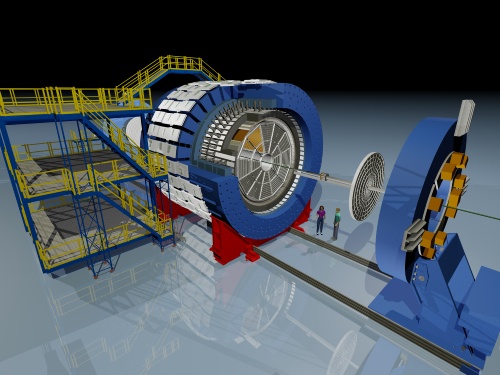
A schematic view of the STAR experiment at RHIC
In past years, the main physics focus in STAR was on exploration of hot and dense nuclear matter in collisions of gold (Au) ions at the top RHIC energy of 200 GeV together with measuring properties of “cold” nuclear matter in small collision systems such as proton+proton, proton+Au, and deuteron+Au, where no QGP is expected to be formed. In 2018, isobaric collisions of Ruthenium-96 (Ru+Ru) and Zirconium-96 (Zr+Zr) were studied to shed light on understanding of the chiral magnetic effect. This study has a fundamental impact beyond the field of high-temperature QCD.
In the upcoming years, the physics focus will primarily be on search for a critical point of the phase diagram of nuclear matter within the so called Beam Energy Scan (BES) program. After the very successful first phase of the BES completed in 2014 that provided promising hints at collision energies below 20 GeV, several observables with higher statistics and improved detector setup will be investigated in the energy range from 7.7 to 19.6 GeV in the collider and from 3 to 7.7 GeV in the fixed-target modes in the coming years. High data statistics at these low RHIC collision energies will be achieved by using a new low-energy electron cooling and longitudinally extended bunches improving the RHIC luminosity.
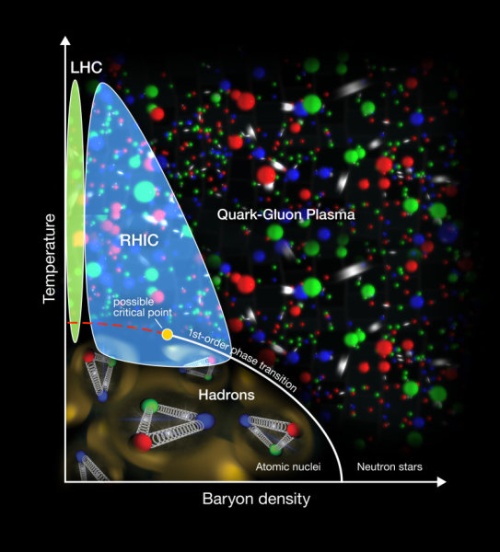 Phase diagram of nuclear matter
Phase diagram of nuclear matter
Credit: Image courtesy of Brookhaven National Laboratory
Besides the exploration of hot and dense nuclear matter, RHIC is also the only machine in the world capable of colliding beams of polarized protons to investigate the “missing” spin of the proton. Three quarks that built the proton account only for about 20 percent of proton's spin. The dedicated spin program carried out at RHIC and within the STAR experiment in parallel to its heavy-ion program is essential to try to find an answer to this fundamental question of modern particle physics.
The STAR group at NPI focused in past primarily on femtoscopic correlation measurements of the hot and dense fireball created in heavy-ion collisions. In last decade, the physics focus shifted toward exploration of hard probes – heavy quarks and jets, created early in the collision and ideally suited for tomography of the QGP matter.
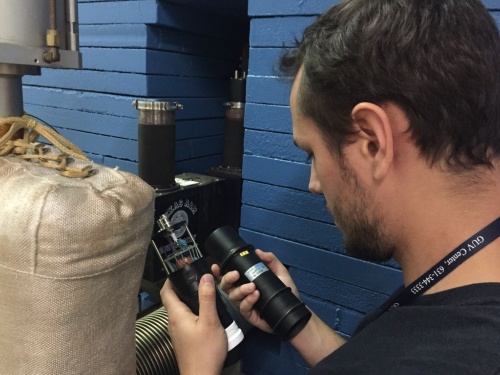 Performing the maintenance of the ZDC detector of the STAR experiment at BNL
Performing the maintenance of the ZDC detector of the STAR experiment at BNL
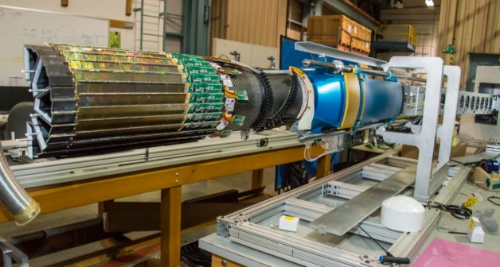
The Heavy Flavor Tracker of the STAR experiment prior to installation at BNL
(Credit: Roy Kaltschmidt, LBNL)
We are also active in participating in detector operations and maintenance. Since 2000, when the STAR experiment became operational, its detectors underwent important upgrades to be able to face new challenges of the rapidly developing field of heavy-ion physics and fully exploit excellent capabilities of RHIC. In 2014-2016 STAR was equipped with a high precision Heavy Flavor Tracker (HFT) to which we contributed with simulations, tests and calibrations. Currently we are helping to maintain the Zero Degree Calorimeter (ZDC) of STAR.
Team members of the STAR experiment:
Research scientists:
Jana Bielčíková (head of the STAR group)
Jaroslav Bielčík (part time)
Michal Šumbera
Ph.D. students:
Jan Vaněk
Miroslav Šimko
Robert Líčeník
MSc. students:
Georgij Ponimatkin
Monika Robotková
Contact person:
Jana Bielčíková, bielcikova@ujf.cas.cz
ALICE (A Large Ion Collider Experiment)
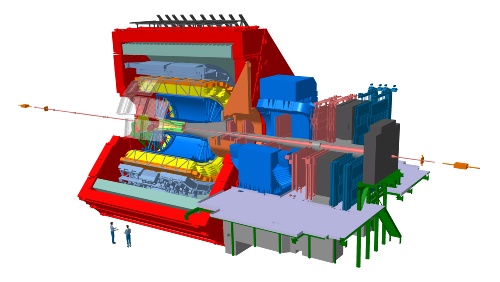 ALICE detector at CERN
ALICE detector at CERN
ALICE is one of the four big experiments at the LHC and at the same time ALICE is the only LHC experiment fully dedicated to exploration of nuclear matter at extreme energy density and temperature. ALICE has a very broad physics program in which physicists try to capture properties of the elusive state of the QGP. At NPI, our physics focus is primarily on analysis of jet properties in proton-proton, proton-lead and lead-lead collisions. Jets are collimated sprays of particles created by fragmentation of highly virtual quarks and gluons. Since jets are produced imminent to QGP formation, they are considered an ideal tool to study properties of the QGP.
On experimental side, we are from the very beginning of our participation in ALICE involved in various tasks related to the Inner Tracking System (ITS) detector. Currently, the ITS detector undergoes a major upgrade. The new ITS will be a high-precision seven-layer silicon tracker surrounding the interaction point. The new ITS will become fully operational in Run3 of the LHC and will enable precision measurements of particles containing heavy quarks. At NPI we employ a proton beam from the cyclotron U-120M to test radiation hardness of various ITS electronic components (FPGAs, silicon sensors, cables) and we also analyze data from similar tests done at other irradiation facilities.
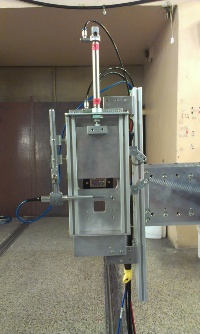 Irradiation of the ALPIDE silicon sensors at the NPI of the CAS cyclotron U-120M
Irradiation of the ALPIDE silicon sensors at the NPI of the CAS cyclotron U-120M
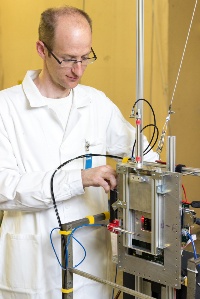 Work on the setup for FPGA irradiation
Work on the setup for FPGA irradiation
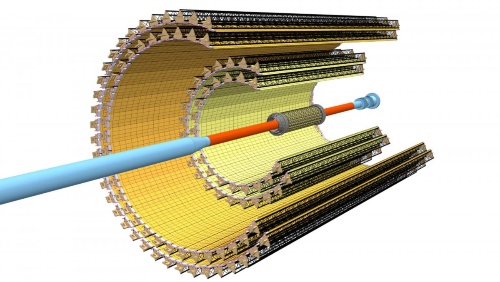 ALICE Inner Tracking System detector after the upgrade
ALICE Inner Tracking System detector after the upgrade
Our third activity in ALICE concerns Grid computing. Amounts of data produced in the collisions at the LHC exceed substantially capacities of the CERN Computing Center to process and store. As a solution, an infrastructure of worldwide distributed computing centers connected through high throughput network and operated by the local institutions involved in the LHC projects was created. Centers involved in this infrastructure called the LHC Computing Grid (LCG) provide sufficient resources for handling and storage of the LHC data. Our involvement in the LCG is realized by ensuring a flawless processing and storage of the ALICE data at the computing center at the Institute of Physics (IoP) of the CAS in Prague which is involved in the LCG. At IoP we have hosted computing servers dedicated to ALICE and a part of the storage. The other part of the storage for ALICE is directly installed and operated at our institute. Our share in the total computing for ALICE has been significant right from the start of the LHC Computing Grid operations.
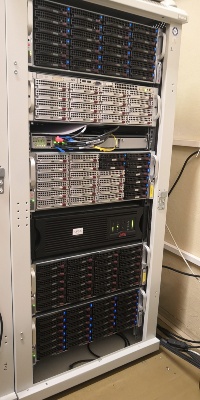 One of the storage servers for ALICE at the NPI of the CAS with a capacity of 340 TB
One of the storage servers for ALICE at the NPI of the CAS with a capacity of 340 TB
Team members of the ALICE experiment:
Research scientists:
Filip Křížek (head of the ALICE group)
Dagmar Adamová
Jana Bielčíková
Svetlana Kushpil
Michal Šumbera
Ph.D. students:
Artem Isakov
Artem Kotliarov
MSc. students:
Ekaterina Eremenko
Contact person:
Filip Křížek, krizek@ujf.cas.cz

